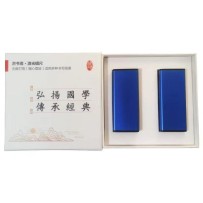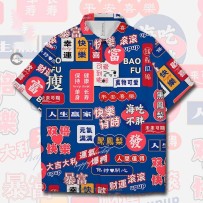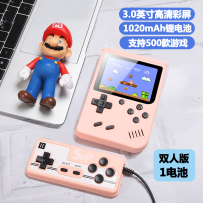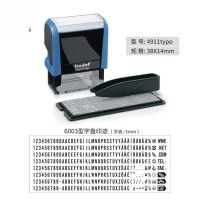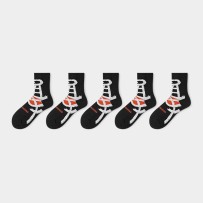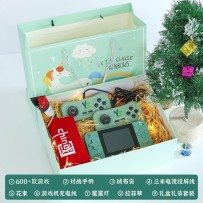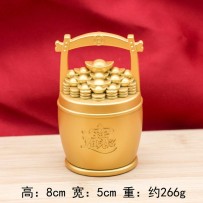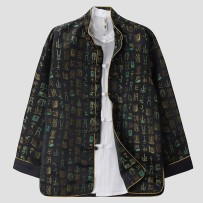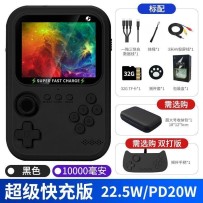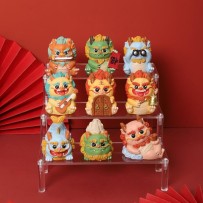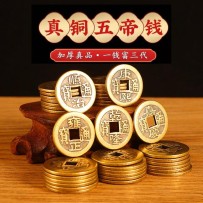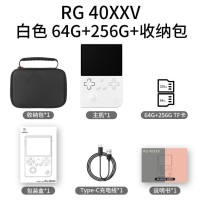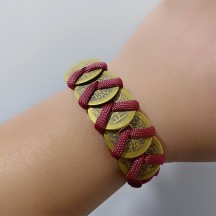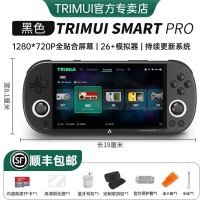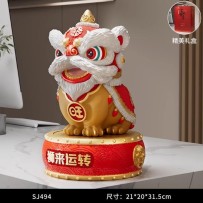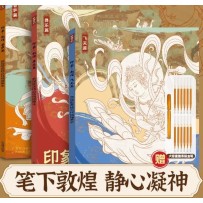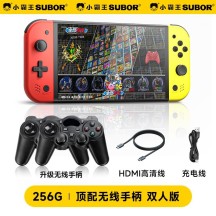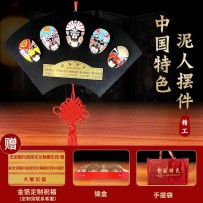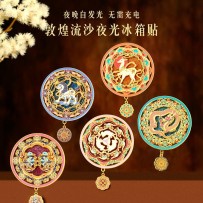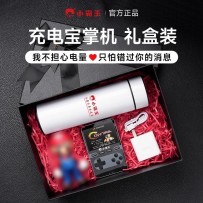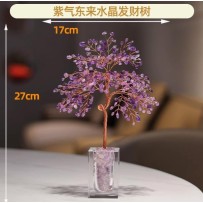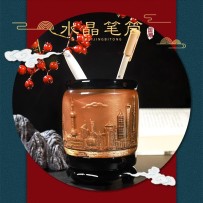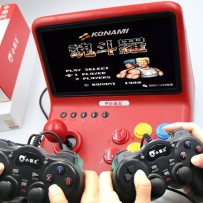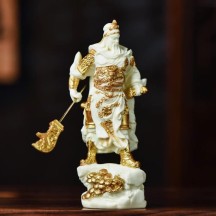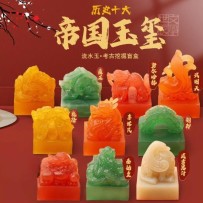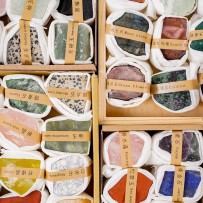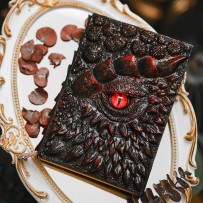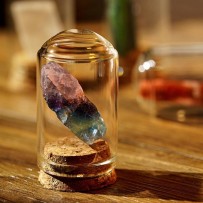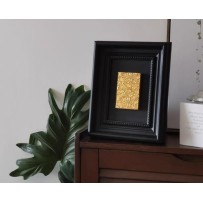The duty of a paperweight (zhenchi) is not merely to hold down paper — it also serves as a symbolic warning, signaling that outsiders should not casually touch the owner's personal belongings. Beyond its practical use, the zhenchi embodies meanings such as "calming the mind" and "protecting the home," helping one remain composed and ward off negative energies. The "ruler" (chi) aspect of its name also represents a tool of measurement, symbolizing that a gentleman conducts himself with rules and boundaries. As an essential item on a scholar’s desk, the paperweight is not just a functional object, but also a refined work of art that brings aesthetic pleasure.
Subcategories
Active filters
New Year Good Luck Oversized Short Sleeve Shirt
The Advantages and Functions of Movable Type Stamps Include:
-
Reusable:
Movable type stamps can be disassembled and rearranged, allowing for adjustments to different printing content. This makes them reusable. -
Improved Printing Efficiency:
Compared to woodblock printing, movable type allows for faster typesetting and printing, significantly enhancing efficiency. -
Reduced Storage Space:
After printing, the individual type blocks can be disassembled and stored, requiring much less space than traditional woodblock printing. -
Adaptable to Various Needs:
Movable type stamps can accommodate a wide range of characters and patterns, including rare or uncommon characters, and can be assembled on demand.
Cotton socks trendy national style sports deodorant breathable autumn and winter mid-tube socks
A wealth figurine generally symbolizes prosperity and good fortune, with the hope of attracting wealth and success in one’s career. These figurines are typically used as decorative items, placed in homes or shops with the intention of bringing financial luck and positive energy.
Oracle gold-stamped jacquard hand-buttoned jacket
The Nine Sons of the Dragon —some fierce, some gentle, some honest and naive, others clever and sly —each has a unique personality and distinct preferences.Rooted in the rich and legendary mythology of ancient China,they embody mystery and cultural depth,now reimagined through a modern aesthetic to convey a strong sense of tradition and heritage.
The Ten Emperors' Coins are copper coins with the reign titles of the ten emperors: Shunzhi, Kangxi, Yongzheng, Qianlong, Jiaqing, Daoguang, Xianfeng, Tongzhi, Guangxu and Xuantong. They are now commonly known as the Ten Emperors' Coins.
The Lucky Lion figurine symbolizes attracting wealth and treasure, prosperity, and good fortune. The lion itself represents strength, authority, and bravery, while the God of Wealth stands for fortune and auspiciousness. Together, they convey a powerful meaning of thriving business and continuous financial success.
The Five Emperors' Coins refer to copper coins with round holes and square holes. Ancient copper coins were cast according to the principle of "round outside and square inside" and "harmony between man and nature". They are the embodiment of the ancient Yin-Yang and Five Elements theory and have a profound cultural attribute.
The Lucky Lion figurine symbolizes attracting wealth and treasure, prosperity, and good fortune. The lion itself represents strength, authority, and bravery, while the God of Wealth stands for fortune and auspiciousness. Together, they convey a powerful meaning of thriving business and continuous financial success.
Depicting Dunhuang with Careful Concentration
Face painting (lianpu) in traditional Chinese opera is an exaggerated theatrical technique that uses makeup to emphasize a character's facial features and expressions, highlighting their personality, emotions, and traits. At the same time, opera masks are also a form of decorative art, combining dots, lines, shapes, and colors in a harmonious way. With vivid colors, elegant designs, and deliberate exaggeration, they vividly and expressively portray the external appearance and inner character of dramatic figures.
May the blessings of Dunhuang stick to you and bring you endless fun and good luck.
A crystal money tree typically symbolizes prosperity, wealth, and good fortune. In Feng Shui, it is believed to enhance financial luck and attract positive energy. Representing hope and aspiration, the money tree is seen as a source of continuous wealth—bringing abundance, nobility, harmony, and happiness to the home.
“Fortune-Attracting Guan” typically refers to depictions of Guan Gong holding a saber upright or across his body. These images of Guan Gong are believed to attract wealth, gather treasure, and ward off evil spirits. As a result, they are highly favored by both business owners and the general public. Such statues are often placed in homes or commercial spaces to pray for prosperous business and abundant financial success.
The jade seal refers specifically to the seal of the emperor, which is a symbol of supreme power. It is made of gold or jade. The seal first appeared in the Zhou Dynasty. In the pre-Qin period, the seal and the seal were commonly called. It was not until the Qin Dynasty that the seal and the seal were distinguished. The seal used by the emperor was called a seal, while the seal used by the subjects could only be called an seal.
Raw crystal stone ornaments serve both as decorative pieces and as tools for energy enhancement. They can be used to improve living environments and boost personal energy. Depending on the type of crystal, they may offer various benefits—such as attracting wealth, enhancing relationships, and promoting overall well-being.
Dragon Book Demon Eye Resin Relief Material Handicraft
Raw crystal stone ornaments serve both as decorative pieces and as tools for energy enhancement. They can be used to improve living environments and boost personal energy. Depending on the type of crystal, they may offer various benefits—such as attracting wealth, enhancing relationships, and promoting overall well-being.
Relief is a type of sculpture in which the artist carves the image he wants to create on a flat plate, making it out of the plane of the original material.










